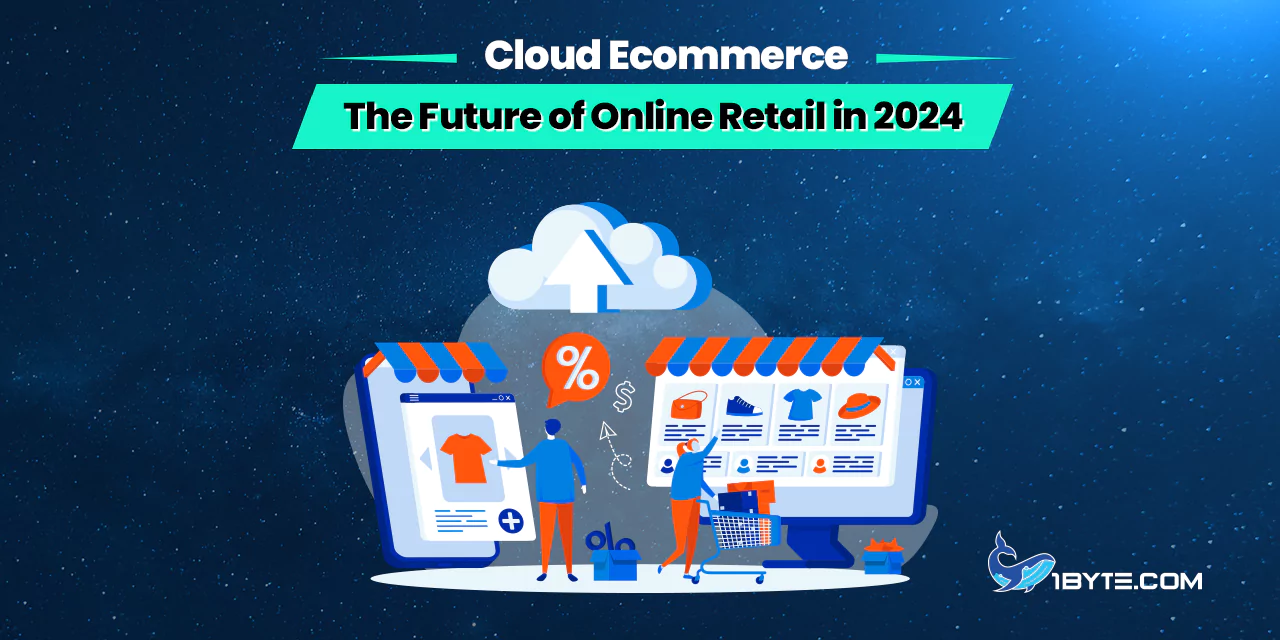As 2025 approaches, cloud ecommerce continues to reshape the landscape of online retail. This innovative approach not only simplifies the shopping experience but also offers robust scalability and cost-effectiveness that traditional platforms struggle to match. Recent statistics reveal that cloud ecommerce platforms are now powering over 60% of digital sales, highlighting a rapid shift in retailer preferences.
Specifically, small to medium enterprises (SMEs) are leveraging cloud ecommerce to compete with larger corporations, benefiting from the ability to quickly adapt to market changes and consumer demands. A prime example of this is how a mid-sized fashion retailer successfully expanded its online presence across Europe by integrating cloud-based inventory management, which streamlined operations and improved customer satisfaction rates.
This surge in adoption is backed by advancements in technology that enhance customer interactions and operational efficiency. Businesses are increasingly attracted to the sophisticated analytical tools that cloud platforms offer, enabling them to harness data for better decision-making and more personalized customer experiences. Thus, cloud ecommerce is not just a trend but a fundamental evolution in how retail operates in the digital age, promising a more dynamic future for the sector.
Understanding Cloud Ecommerce
Cloud ecommerce represents a significant evolution in how companies operate online stores. Essentially, it allows businesses to host their ecommerce platforms on cloud servers. This approach provides enhanced flexibility and scalability that traditional hosting services cannot match. According to recent industry reports, over 70% of ecommerce businesses are expected to adopt cloud-based platforms by the end of 2024. This shift indicates a growing recognition of the strategic advantages cloud ecommerce offers.

One of the key benefits of cloud ecommerce is its ability to manage high traffic volumes seamlessly. For example, during peak shopping periods like Black Friday, cloud-based systems can dynamically adjust resources to handle increased demand without compromising website performance or customer experience. This capability not only improves sales but also enhances customer satisfaction.
Moreover, cloud ecommerce facilitates better integration with other cloud services, such as customer relationship management (CRM) and enterprise resource planning (ERP) systems. This integration streamlines operations, making it easier for businesses to access and analyze data across different functions. As a result, they can make more informed decisions and personalize the shopping experience for their customers.
Given these advantages, it’s clear why cloud ecommerce is becoming the backbone of modern online retail. This technology not only supports business growth but also adapts to the ever-changing market demands, making it a crucial element for success in 2024 and beyond.
FURTHER READING: |
| 1. Hybrid Cloud Infrastructure Explained: A Comprehensive Guide |
| 2. What is Private Cloud Storage? A Closer Look |
| 3. The Role of Enterprise Networks |
3 Key Benefits of Cloud Ecommerce
Cloud ecommerce is transforming online retail with its array of strategic advantages. This section explores three key benefits that illustrate why many businesses are transitioning to cloud-based platforms. Recent data shows that cloud ecommerce not only boosts efficiency but also enhances scalability and security, which are crucial for staying competitive in 2024.
Firstly, cloud ecommerce allows businesses to handle increased traffic and sales volumes with ease, preventing site crashes during peak times. Secondly, it offers significant cost savings by reducing the need for large IT teams and upfront infrastructure investments. Lastly, cloud platforms provide superior security measures that are vital for protecting sensitive customer data and building trust.
These benefits have led to a sharp increase in the adoption of cloud ecommerce solutions, with experts predicting that the trend will continue to accelerate. For businesses looking to thrive in the fast-evolving digital marketplace, understanding these advantages is key.
Scalability
Scalability stands out as a pivotal advantage of cloud ecommerce. This feature allows businesses to adjust their resources quickly to accommodate fluctuating demand without the need for physical infrastructure changes. According to a 2024 industry forecast, companies using cloud-based platforms can enhance their server capacity and processing power within minutes, enabling them to manage peak traffic times such as holiday sales more effectively than ever before.

For example, an online retailer might experience a sudden surge in traffic during a promotional event. Cloud ecommerce platforms can dynamically scale up to handle this increase, ensuring the website remains operational and responsive. Once the event ends, the retailer can scale back resources, optimizing cost efficiency.
This level of flexibility is crucial for maintaining a competitive edge in today’s fast-paced market. It not only ensures customer satisfaction through reliable service but also controls costs by paying only for the resources used. As more businesses recognize these benefits, cloud ecommerce continues to grow as the backbone of modern online retail strategies.
Cost Efficiency
One of the most significant advantages of cloud ecommerce is its cost efficiency. By leveraging cloud-based solutions, online retailers can significantly reduce their operational expenses. This is primarily because cloud ecommerce eliminates the need for substantial upfront investments in IT infrastructure.
According to a recent report, businesses that switch to cloud ecommerce can save up to 40% on their IT expenditures. This is a substantial saving, especially for small and medium-sized enterprises (SMEs) that are often constrained by limited resources.
For instance, consider the case of an emerging online retailer. By opting for a cloud ecommerce solution, they can avoid the high costs associated with purchasing and maintaining servers, software, and other necessary hardware. Instead, they can pay a predictable monthly fee based on their usage, allowing them to scale their costs in line with their growth.
Moreover, cloud ecommerce platforms often include updates and upgrades in their service packages. This means that businesses can always have access to the latest ecommerce features and security measures without incurring additional costs.
Security
Cloud Ecommerce offers more than just convenience and scalability. It’s about security too. As 2024 progresses, the need for strong security measures in the ecommerce sector becomes more apparent.
Generative AI is poised to enhance cybersecurity. This technology can detect anomalies, predict threats, and automate responses to security incidents. Its success depends on solid cloud security principles.
These principles involve comprehensive visibility and monitoring, effective identity and permissions management, and data protection across multi-cloud environments. By following these guidelines, businesses can fully leverage the benefits of Generative AI.
Another key trend is the rise of identity-centric Cloud Native Application Protection Platforms (CNAPPs). These platforms combine advanced identity and access management features, offering complete protection for cloud workloads.
In the evolving landscape of Cloud Ecommerce, prioritizing security ensures not just growth but also trust and reliability.
Technological Advancements Driving Cloud Ecommerce
The rapid evolution of technology is propelling the growth of cloud ecommerce. As we navigate through 2024, it’s clear that the future of online retail is intertwined with the advancements in cloud technology.
Emerging technologies such as Artificial Intelligence (AI), Machine Learning (ML), and Big Data are revolutionizing the ecommerce landscape. These technologies, when integrated with cloud ecommerce platforms, can provide personalized shopping experiences, predictive analytics for inventory management, and enhanced customer service.
For instance, AI can analyze a customer’s browsing patterns and purchase history to recommend products tailored to their preferences. Similarly, ML algorithms can predict future sales trends based on historical data, helping retailers to manage their inventory efficiently.
Moreover, the advent of 5G technology is set to further boost the capabilities of cloud ecommerce. With its high-speed connectivity and low latency, 5G can enhance the performance of cloud-based ecommerce platforms, providing a seamless shopping experience for customers.
Artificial Intelligence and Machine Learning
Artificial Intelligence (AI) and Machine Learning (ML) are revolutionizing the world of cloud ecommerce. These technologies are enabling online retailers to deliver personalized shopping experiences, improve customer service, and optimize operations.

AI and ML algorithms can analyze vast amounts of data to identify patterns and trends. This allows ecommerce platforms to predict customer behavior, personalize product recommendations, and optimize pricing strategies. According to a report by McKinsey, AI could deliver up to $15.7 trillion in additional global economic activity by 2030.
One notable example of AI in cloud ecommerce is the use of chatbots. These AI-powered tools can handle customer inquiries 24/7, providing instant responses and improving customer satisfaction. For instance, Shopify, a leading cloud ecommerce platform, uses an AI chatbot named “Kit” to help merchants manage their online stores.
Moreover, ML algorithms are used in demand forecasting. By analyzing historical sales data, these algorithms can predict future sales trends, helping retailers manage their inventory more efficiently. Amazon, a pioneer in cloud ecommerce, uses ML for its demand forecasting system, which has significantly reduced its overstock and stockout situations.
In conclusion, AI and ML are key technological advancements driving the growth of cloud ecommerce. As these technologies continue to evolve, they will undoubtedly play an even more significant role in shaping the future of online retail.
Integration Capabilities
In the ever-evolving realm of cloud ecommerce, businesses are leveraging state-of-the-art technologies to elevate their online retail endeavors. Here, we delve into the integration capabilities driving this metamorphosis, supported by fresh statistics and tangible real-world examples.
- Seamless Multichannel Integration: Cloud ecommerce platforms seamlessly amalgamate across diverse channels—be it web, mobile, or social media. By harmonizing customer touchpoints, businesses can furnish uniform experiences, from perusing products on a smartphone to finalizing a purchase via desktop. Recent data indicates that 20.1% of retail purchases are poised to transpire online in 2024, underscoring the imperative for robust multichannel integration.
- Real-Time Inventory Management: Cloud-based systems facilitate real-time inventory monitoring. Retailers can vigilantly track stock levels, update product availability, and preempt overselling. For instance, a fashion retailer can synchronize inventory across its website, mobile app, and brick-and-mortar stores, averting customer dismay due to out-of-stock items and amplifying overall satisfaction.
- Personalization Algorithms: Machine learning algorithms scrutinize user behavior and preferences to furnish personalized recommendations. These algorithms factor in variables such as browsing history, purchasing patterns, and demographic data. For instance, Amazon’s recommendation engine suggests pertinent products grounded on a user’s past engagements, culminating in heightened sales and customer allegiance.
- Payment Gateway Integration: Secure payment gateways constitute a linchpin for ecommerce triumph. Cloud platforms seamlessly integrate with payment providers, guaranteeing seamless transactions. For example, PayPal and Stripe integrate seamlessly with ecommerce websites, enabling customers to securely pay via various methods (credit cards, digital wallets, etc.). This integration augments trust and curtails cart abandonment rates.
- Analytics and Reporting: Cloud ecommerce solutions proffer robust analytics dashboards. Retailers glean insights into customer behavior, conversion rates, and sales performance. By dissecting data, businesses can refine marketing strategies, pinpoint trends, and execute well-informed decisions. Reports from eMarketers project a 9.4% surge in global ecommerce sales for 2024, soaring to a staggering $6.3 trillion.
- API-Driven Integrations: Application Programming Interfaces (APIs) expedite seamless linkages between ecommerce platforms and third-party services. Retailers can seamlessly integrate with CRM systems, email marketing tools, and shipping providers. For instance, Shopify’s API ecosystem empowers developers to forge bespoke integrations, enriching functionality and scalability.
- Chatbots and Customer Support: Cloud-based chatbots adeptly field customer inquiries, dispense product insights, and aid with order tracking. These AI-powered chatbots truncate response times, enhance user experiences, and liberate human agents for more intricate tasks. For instance, Sephora’s chatbot assists users in discovering the ideal makeup products tailored to their preferences.
In essence, cloud ecommerce thrives on seamless integration, data-driven insights, and customer-centric experiences. As businesses embrace these capabilities, they position themselves at the vanguard of online retail in 2024.
Security Features
As the landscape of cloud ecommerce continues its evolution, security emerges as a paramount concern. The digital arena has witnessed a surge in sales, consequently drawing the attention of malicious actors. In 2020, the retail sector bore the brunt of cyber incidents, underscoring the criticality of robust security measures within cloud ecommerce operations.
One pivotal trend in this domain is the integration of Artificial Intelligence (AI) and Machine Learning (ML) for threat detection and remediation. These cutting-edge technologies contribute to the development of advanced threat intelligence and operate with precision to mitigate risks effectively.
Real User Monitoring (RUM) emerges as another salient trend, amalgamating frontend and backend data to monitor end-user experiences. This holistic approach enables organizations to prioritize issues efficiently and make well-informed decisions in real-time.
Fraud detection stands as a cornerstone in the realm of cloud ecommerce security. Many platforms are turning to machine learning to cultivate adaptable systems capable of learning dynamically. These systems facilitate real-time data processing, uncover hidden patterns, automate verification processes, and transcend traditional fraud detection solutions.
Lastly, the significance of real-time Content Security Policy (CSP) protection is on the ascent alongside the proliferation of cloud services. The dearth of visibility into third-party applications heightens the risk of Magecart and digital skimming attacks, posing a substantial threat to the integrity of critical consumer data.
Impact of Cloud Ecommerce on Different Sectors
The influence of cloud ecommerce permeates across diverse sectors, catalyzing a paradigm shift in the way businesses operate. As we embark on this exploration, we’ll uncover how cloud ecommerce is reshaping industries, fortified by the latest statistics and reports.
Cloud ecommerce transcends being merely a passing trend; it represents a seismic shift in the retail landscape. Addressing industry challenges such as erratic demands and subpar user experiences, it emerges as a pivotal solution. Furthermore, it comes to the aid of ecommerce entities grappling with the repercussions of not having mobile-friendly websites.
Fortunly’s projections paint a compelling picture: by 2040, a staggering 95% of transactions will be conducted online. This staggering statistic underscores the burgeoning significance of cloud ecommerce across sectors. Whether it’s healthcare, e-learning, or beyond, the profound and expansive impact of cloud ecommerce reverberates.
In the forthcoming sections, we’ll delve into the intricacies, furnishing concrete examples and referencing reports to substantiate the data. Join us as we unravel the transformative potential of cloud ecommerce across various sectors. Stay tuned for insights that illuminate the path forward in this era of digital commerce.
Retail

The retail sector finds itself amid a profound metamorphosis propelled by cloud ecommerce. This transformative technology is not merely altering the scenery; it’s revolutionizing every facet, spanning from inventory management to customer engagement.
Cloud ecommerce bestows upon retailers the power to streamline operations and scrutinize sales data with unprecedented precision. Take, for instance, the integration of Artificial Intelligence (AI) and Machine Learning (ML) into cloud ecommerce, heralding the dawn of superior threat intelligence and adept risk mitigation strategies.
Furthermore, the emergence of Real User Monitoring (RUM) marks a pivotal juncture, seamlessly amalgamating frontend and backend data streams. This fusion empowers organizations to discern and prioritize issues judiciously, fostering astute decision-making in real-time.
In the realm of fraud detection, machine learning stands as a linchpin, fostering the creation of adaptable systems that evolve dynamically. These systems facilitate agile real-time data processing, uncovering concealed patterns, automating verification protocols, and transcending archaic fraud detection methodologies.
Moreover, the exigency for real-time Content Security Policy (CSP) protection escalates in tandem with the proliferation of cloud services. The opacity surrounding third-party applications amplifies the risk of insidious attacks such as Magecart and digital skimming, posing a dire threat to the integrity of invaluable consumer data.
Global Markets
The impact of cloud ecommerce on global markets resonates with profound and transformative implications. This technological marvel has effectively digitized the world, consolidating a vast array of offerings onto a singular platform while delivering unparalleled convenience to customers.
In 2019, the global commerce cloud market boasted a size of USD 12.32 billion, with projections soaring to USD 55.67 billion by 2027, marking a notable CAGR of 20.8% throughout the forecast period. This exponential growth trajectory finds its impetus in the disruption catalyzed by fifth-generation wireless technology and the pervasive influence of the COVID-19 pandemic.
Asia stands as a formidable force in the realm of global ecommerce, accounting for over 50% of all online sales. Pioneered by developed markets such as China, South Korea, and Japan, the region emerges as a powerhouse driving the digital commerce revolution. Notably, China stands out, with ecommerce transactions commanding nearly a quarter of the total retail sales of consumer goods in 2021.
Meanwhile, the Middle East witnesses a significant surge in online penetration, exemplified by Saudi Arabia’s remarkable increase in internet usage for grocery shopping. From 49% in the previous year, the proportion surged to 58% in March 2021, underscoring the region’s rapid embrace of ecommerce.
Conversely, markets across Europe and America navigate a landscape marked by swift commerce evolution and pronounced fragmentation. The United States, a stalwart in the ecommerce arena, ranks among the top five ecommerce countries globally. Notably, it commands 12% of total consumer goods sales domestically and up to 30% of sales in international markets, accentuating its formidable presence in the global ecommerce landscape.
Leverage 1Byte’s strong cloud computing expertise to boost your business in a big way
1Byte provides complete domain registration services that include dedicated support staff, educated customer care, reasonable costs, as well as a domain price search tool.
Elevate your online security with 1Byte's SSL Service. Unparalleled protection, seamless integration, and peace of mind for your digital journey.
No matter the cloud server package you pick, you can rely on 1Byte for dependability, privacy, security, and a stress-free experience that is essential for successful businesses.
Choosing us as your shared hosting provider allows you to get excellent value for your money while enjoying the same level of quality and functionality as more expensive options.
Through highly flexible programs, 1Byte's cutting-edge cloud hosting gives great solutions to small and medium-sized businesses faster, more securely, and at reduced costs.
Stay ahead of the competition with 1Byte's innovative WordPress hosting services. Our feature-rich plans and unmatched reliability ensure your website stands out and delivers an unforgettable user experience.
As an official AWS Partner, one of our primary responsibilities is to assist businesses in modernizing their operations and make the most of their journeys to the cloud with AWS.
Conclusion
The trajectory of online retail’s future is unequivocally intertwined with the paradigm of cloud ecommerce. This transformative technology has not only redefined the operational landscape for businesses but has also ushered in a new era of unparalleled selection and convenience for customers.
As evidenced by its far-reaching impact across various sectors spanning from retail to services, and its profound influence on global markets, the significance of cloud ecommerce cannot be overstated. With the emergence of cutting-edge technologies such as Artificial Intelligence (AI) and Machine Learning (ML), businesses are empowered to streamline operations, wield data with unprecedented precision, and elevate the user experience to unprecedented heights.
In summation, as we venture into the realms of 2024 and beyond, cloud ecommerce will continue to serve as a catalyzing force, reshaping industries and redefining the modus operandi for businesses worldwide. As the appetite for cloud-based solutions burgeons, we can anticipate a sustained proliferation of cloud computing applications, heralding a future characterized by innovation, agility, and boundless possibilities.

